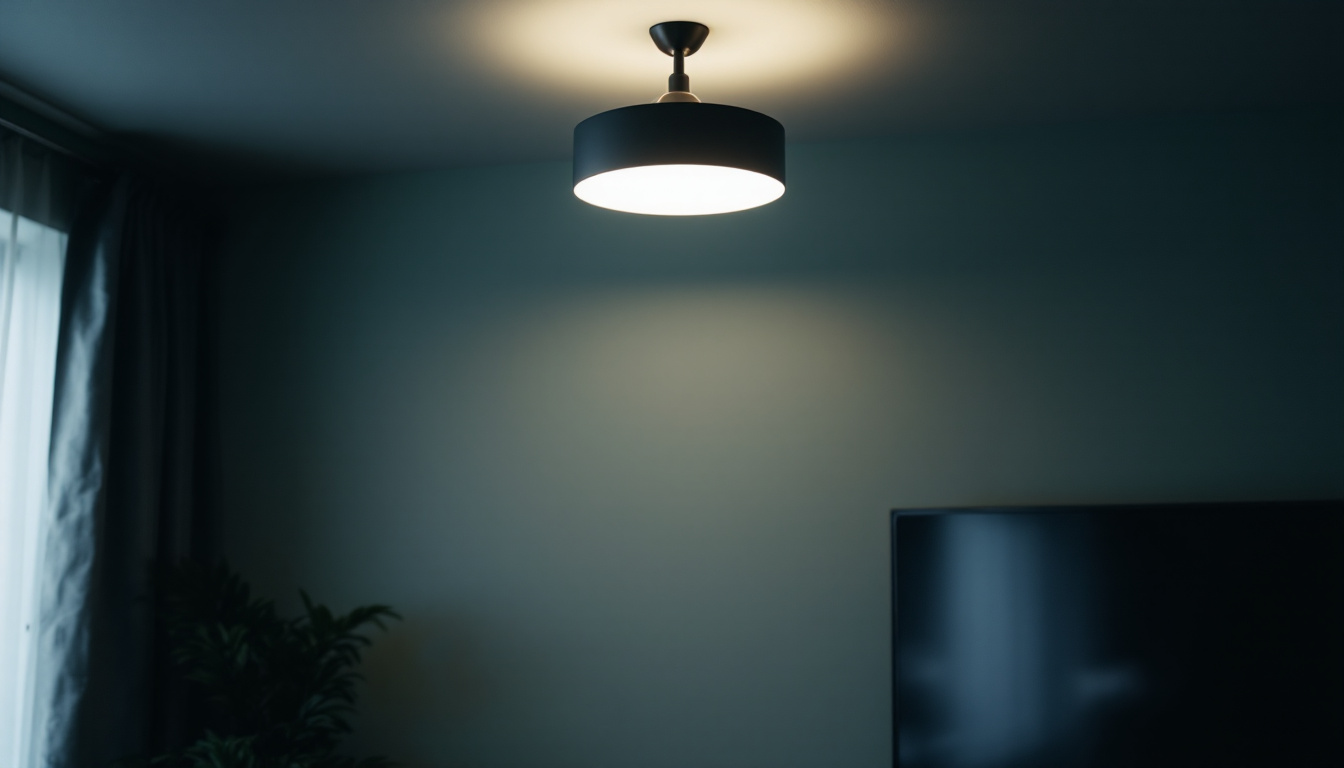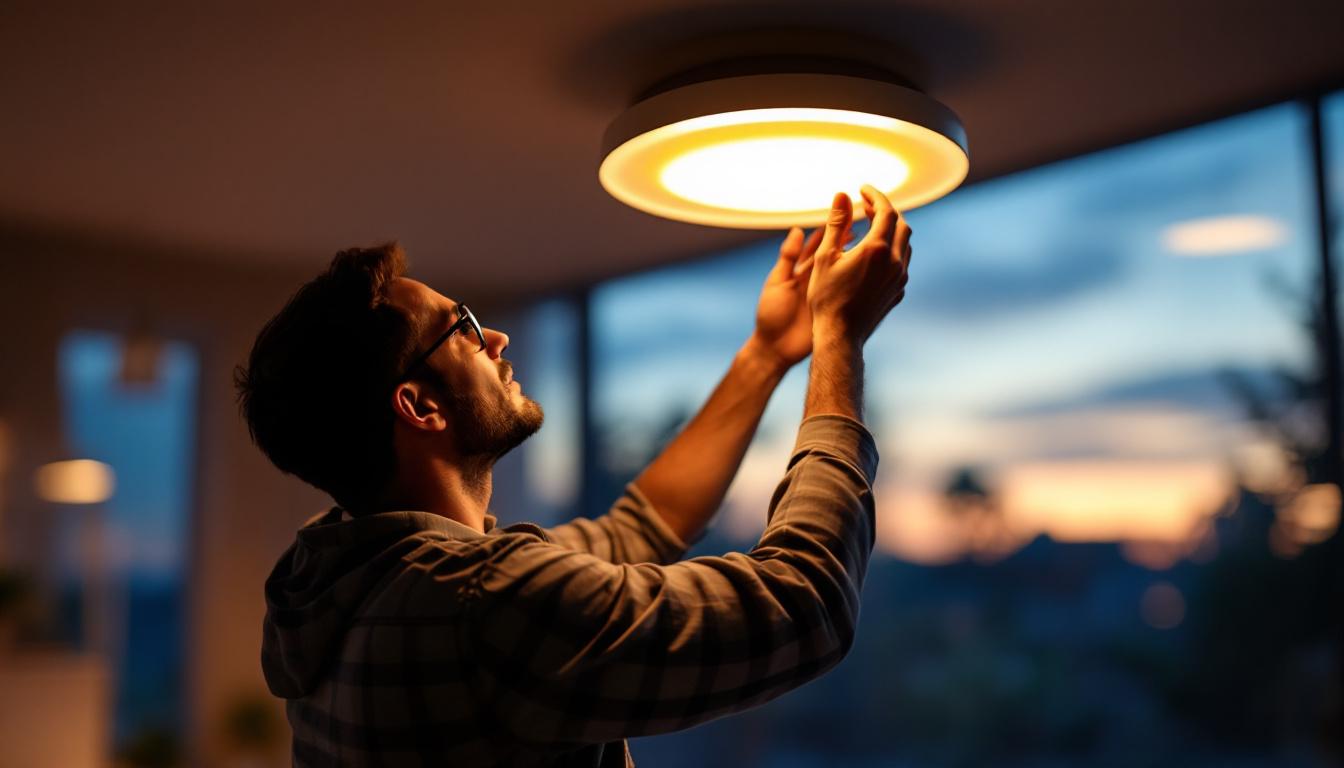
Lighting design in spaces with low ceilings presents unique challenges for contractors. The right ceiling lights can enhance the aesthetic appeal and functionality of a room, but common mistakes can lead to inadequate illumination or an unappealing look. This guide aims to help lighting contractors navigate these challenges effectively, ensuring that their clients are satisfied with the results.
Low ceilings can create a sense of confinement if not addressed properly. It’s crucial for lighting contractors to understand how to work within these constraints to maximize both light and space. The following sections will explore some common pitfalls and how to avoid them.
One of the most significant mistakes contractors make is selecting fixtures that are too bulky or visually overwhelming for low ceilings. Fixtures that hang too low can obstruct sight lines and create a cramped atmosphere. Instead, opt for flush mount or semi-flush mount fixtures that provide adequate lighting without intruding into the space.
Additionally, consider using recessed lighting. This option can be particularly effective in low-ceilinged areas, as it allows for a clean, streamlined look while providing ample illumination. However, it’s essential to ensure that the placement of recessed lights is strategic to avoid dark spots. For instance, spacing the fixtures evenly and aligning them with the room’s focal points can enhance the overall aesthetic while ensuring that every corner is well-lit. Moreover, incorporating dimmable options can allow for flexibility in ambiance, making the space feel more versatile for different activities, whether it’s a cozy dinner or a lively gathering.
The color temperature of the lighting can significantly impact how a room feels, especially in spaces with low ceilings. A common mistake is using overly warm or overly cool lighting that can either make the space feel dull or too clinical. A color temperature of around 3000K to 4000K is generally recommended for a balanced, inviting atmosphere.
Contractors should also consider the effects of color rendering. High CRI (Color Rendering Index) bulbs will make colors appear more vibrant, which can help a low-ceilinged room feel more open and inviting. Choosing the right color temperature and CRI can transform a space, making it feel larger and more welcoming. Additionally, integrating lighting that mimics natural daylight can enhance mood and productivity, making it especially beneficial in areas like home offices or kitchens where functionality is key. By carefully selecting the right lighting elements, contractors can create a harmonious environment that feels both spacious and energizing.
When designing lighting for low ceilings, it’s not just about the fixtures themselves; the overall design and layout play a crucial role. Here are some key considerations to keep in mind.
Effective lighting design often involves layering different types of light—ambient, task, and accent. For low ceilings, ambient lighting is essential, but it should be complemented with task lighting to ensure functionality. For example, under-cabinet lights in kitchens or wall sconces in living areas can provide necessary illumination without crowding the space.
Accent lighting can also be used to highlight architectural features or artwork, drawing the eye upward and creating the illusion of height. By layering light, contractors can create a dynamic environment that feels both spacious and inviting. Additionally, dimmable fixtures can offer flexibility, allowing homeowners to adjust the brightness according to the time of day or mood, further enhancing the versatility of the space.
Incorporating mirrors and reflective surfaces can significantly enhance the perception of space in low-ceiling areas. When strategically placed, mirrors can reflect light and create the illusion of depth. This technique can be particularly effective in smaller rooms where height is limited.
Contractors should also consider using glossy finishes on walls and ceilings. These surfaces can bounce light around the room, further enhancing brightness and making the space feel larger. Combining these elements with appropriate lighting can lead to a successful design that overcomes the limitations of low ceilings. Furthermore, decorative mirrors can serve as focal points, adding an element of style while simultaneously contributing to the overall brightness of the room. Choosing frames that complement the existing decor can tie the room together, making it feel cohesive and thoughtfully designed.
While understanding the challenges and design considerations is crucial, avoiding common mistakes is equally important for lighting contractors. Here are some pitfalls to steer clear of.
Many contractors fail to incorporate dimming options into their lighting designs. Dimmers allow for flexibility in lighting levels, enabling clients to adjust the ambiance based on their needs. In low-ceiling spaces, where lighting can feel overwhelming, having the ability to dim the lights can create a more comfortable environment.
Moreover, dimmable LED fixtures are energy-efficient and can extend the lifespan of the bulbs, providing both functional and economic benefits. Encouraging clients to invest in dimming capabilities can enhance their overall satisfaction with the lighting design. Additionally, the use of smart dimmers can further elevate the experience, allowing users to control lighting through mobile apps or voice commands, thus integrating seamlessly with modern home automation systems.
Contractors often overlook the height of the occupants when selecting lighting fixtures. A fixture that may seem appropriate for an average height individual could be too low for taller individuals, leading to discomfort. It’s essential to consider the average height of the users in the space and adjust the fixture placement accordingly.
Additionally, when designing spaces for families or communities, it’s important to think about the varying heights of children and adults. This consideration can prevent potential hazards and ensure that the lighting serves its intended purpose effectively. For instance, in a children’s playroom, fixtures should be positioned higher to avoid being within reach of curious little hands, while still providing adequate illumination for safety and fun. Furthermore, adjustable fixtures can be a great solution, allowing for modifications as the occupants grow or as the space is repurposed over time.
Once the design is finalized, the installation process is critical for achieving the desired results. Here are some best practices for lighting installation in low-ceiling spaces.
The placement of fixtures can make or break a lighting design, especially in low-ceiling environments. It’s essential to avoid clustering lights too closely, which can create harsh shadows and uneven illumination. Instead, distribute fixtures evenly throughout the space to ensure a balanced light distribution.
When installing recessed lighting, it’s advisable to follow the “rule of thumb” for spacing. Typically, fixtures should be placed about 4 to 6 feet apart, depending on the wattage and beam spread. This spacing helps to avoid dark spots and provides a more uniform light throughout the room.
Low ceilings often come with unique electrical challenges. Contractors must ensure that the existing electrical infrastructure can support the new lighting fixtures, especially if they are upgrading to more powerful options. This may involve consulting with an electrician to assess the capacity of the circuit and making necessary upgrades.
Furthermore, when installing multiple fixtures, it’s crucial to consider the load on the circuit. Overloading can lead to flickering lights or, in severe cases, electrical fires. Ensuring adequate electrical support is not only a best practice but a critical safety measure.
As technology continues to evolve, new solutions for low-ceiling lighting are emerging. Staying informed about the latest innovations can help contractors provide the best options for their clients.
smart lighting systems offer a range of benefits, including remote control, scheduling, and energy monitoring. These systems can be particularly advantageous in low-ceiling environments, where flexibility in lighting can enhance the overall experience. Clients can adjust lighting levels or colors to suit their mood or activities, making the space more versatile.
Moreover, integrating smart technology can help in energy savings, as users can turn off lights remotely or set schedules to ensure lights are only on when needed. This not only improves convenience but also reduces energy costs over time.
LED lighting has revolutionized the industry, offering energy efficiency and longevity. In low-ceiling spaces, where lighting can be a significant concern, LED fixtures provide a solution that minimizes energy consumption while maximizing output. They come in various styles, including slim designs that are perfect for tight spaces.
Furthermore, LED lights emit less heat compared to traditional bulbs, making them safer for low ceilings. This characteristic reduces the risk of overheating and extends the lifespan of the fixtures, providing a win-win situation for both contractors and clients.
Lighting contractors face unique challenges when designing for low ceilings, but by avoiding common mistakes and following best practices, they can create beautiful and functional spaces. Understanding the nuances of fixture selection, placement, and technology is essential for achieving optimal results.
By considering the needs of the occupants, utilizing innovative solutions, and implementing effective installation techniques, contractors can enhance the appeal and functionality of low-ceiling spaces. Ultimately, the goal is to create environments that are not only well-lit but also inviting and comfortable for all who inhabit them.
Ready to elevate your lighting solutions for low ceilings? At LumenWholesale, we provide lighting contractors like you with the highest quality, spec-grade lighting products at unbeatable wholesale prices. Say goodbye to local distributor markups and hello to a vast selection of reliable, high-performance lighting that meets the strictest industry standards. Plus, with free shipping on bulk orders, you can stock up on premium lighting without any hidden fees or compromises. Don’t let low ceilings dim your project’s potential. Visit LumenWholesale now and discover the perfect blend of quality, affordability, and convenience for your next installation.

Discover how traffic light light bulbs are revolutionizing energy efficiency in urban environments.

Discover the best dimmer switches on the market with our expert guide tailored for lighting contractors.

Explore the essential strategies lighting contractors need to overcome challenges when installing dusk to dawn ceiling lights.

Unlock the secrets of Type A bulbs with our comprehensive guide tailored for lighting contractors.